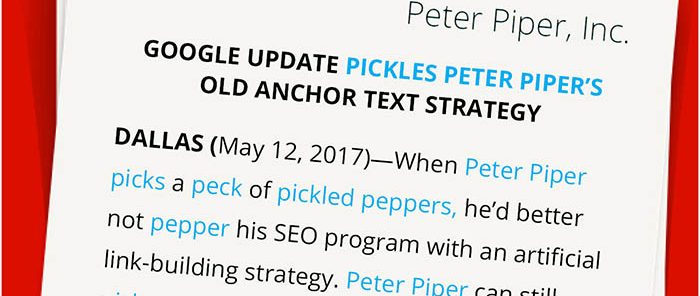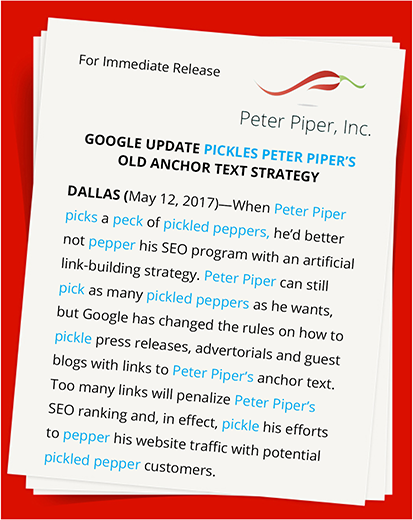
Want to Close More Sales With Digital? Talk to People, Not Machines.
President
Burns360
About a year-and-a-half ago, Google lowered the boom on digital marketing and PR managers for stuffing press releases, advertorials and guest posts with too many hyperlinks. From that day on, too many hyperlinks with nothing worthwhile to add actually penalized—instead of increased—your SEO ranking.
It was a big shock at the time because for years it was considered best practice to include as many hyperlinks as possible in a news release, online advertorial or other type of guest post. The reason was simple. The more hyperlinks you could squeeze into a release, the more backlinks you were likely to build.
And the more backlinks you had from third-party sites, the higher your site was likely to rank on Google. The rub, however, was that keyword-stuffing campaigns were mostly launched with the computer, not the user, in mind.

Keyword Stuffing: A widespread practice during the early web.
Not only did hyper stuffing often lead users to a bevy of sites they never intended to go to in the first place, but even if they did land on the page they wanted, artificially stuffed content is usually a turn-off. Your visitors want to get right to the point. And you want them to as well.
Here’s an example from Google that illustrates how awkward, artificial and even annoying over-stuffing keyword terms can be:
“There are many wedding rings on the market. If you want to have a wedding, you will have to pick the best ring. You will also need to buy flowers and a wedding dress.”
I don’t know about you, but my guess is that someone wants (pretty badly) to sell wedding products or, maybe, even wedding planning services. Either way, I sure hope their wedding services are a lot better than their copy.
So if organic link building is still a critical SEO strategy (and it is), where do you draw the line?
Don’t just write for anyone. Write for the digital audience YOU want to reach.
Think of how digital marketing has evolved. In its earlier stages, it was largely about keyword strategies that, in effect, told a computer your site was one that contained the information the user was looking for. What mattered most was what happened in the back end. No matter how compelling or informative your front end may have been, it did absolutely no good if no one could find you.
But as algorithms got more and more sophisticated, the pendulum began to swing in the other direction. Google made monumental leaps in its ability to understand what users are actually looking for based on natural language and semantic search, so steadily by steadily, words began to overshadow hyperlinks in terms of SEO relevance. And in turn, encouraged relevant and authoritative sites to link to your actual valuable content.
As Big Data and the Internet of Things continue to forge new opportunities to connect with your target audiences, brands will soon have unprecedented opportunities to build deeper and more personalized relationships with their stakeholders.
It all begins by talking to the people you want to reach, not the machines that make the connections possible.
Want to start building natural connections to your audience? Let’s chat!


